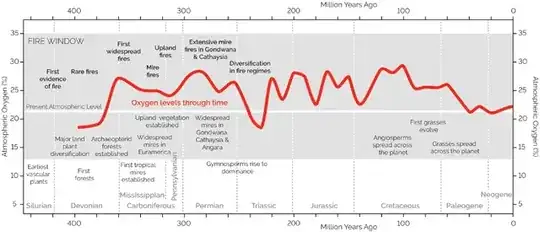During much of the Cretaceous period, oxygen levels were substantially higher than they are currently, with estimates indicating that around 30% of the atmosphere consisted of oxygen. Obviously, this indicates that species that evolved during this time period would be likely to require these levels of oxygen to support their metabolisms. This raises the question of how these species would fare if suddenly transported into the modern world. Obviously, there would be some difficulty, but how severe would it be? Humans are capable of acclimating to lower oxygen levels while climbing mountains, would dinosaurs have to have some kind of similar acclimatization process (possibly in an artificially oxygen-enriched transition environment where the oxygen content is decreased more gradually)?
Essentially, how much trouble would Cretaceous-period dinosaurs such as Triceratops or Tyrannosaurus Rex have in adapting to a modern atmosphere?
